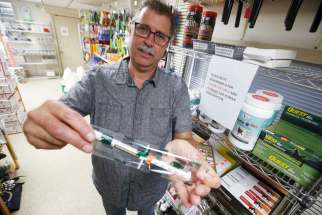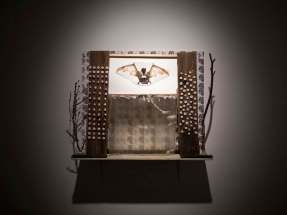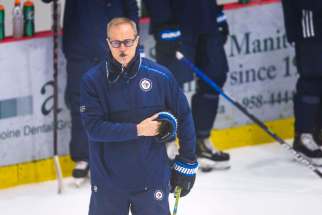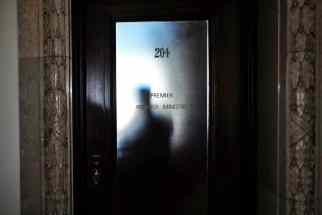Playing politics in the time of COVID Candidates forced to break with tradition, focus on virtual campaigns
Read this article for free:
or
Already have an account? Log in here »
To continue reading, please subscribe:
Monthly Digital Subscription
$0 for the first 4 weeks*
- Enjoy unlimited reading on winnipegfreepress.com
- Read the E-Edition, our digital replica newspaper
- Access News Break, our award-winning app
- Play interactive puzzles
*No charge for 4 weeks then price increases to the regular rate of $19.00 plus GST every four weeks. Offer available to new and qualified returning subscribers only. Cancel any time.
Monthly Digital Subscription
$4.75/week*
- Enjoy unlimited reading on winnipegfreepress.com
- Read the E-Edition, our digital replica newspaper
- Access News Break, our award-winning app
- Play interactive puzzles
*Billed as $19 plus GST every four weeks. Cancel any time.
To continue reading, please subscribe:
Add Free Press access to your Brandon Sun subscription for only an additional
$1 for the first 4 weeks*
*Your next subscription payment will increase by $1.00 and you will be charged $16.99 plus GST for four weeks. After four weeks, your payment will increase to $23.99 plus GST every four weeks.
Read unlimited articles for free today:
or
Already have an account? Log in here »
Hey there, time traveller!
This article was published 16/09/2021 (1549 days ago), so information in it may no longer be current.
Clad in a bright red shirt, Paul Ong walks along Portage Avenue in one scene and passes the Canadian Museum for Human Rights in another, while telling voters why he launched his campaign.
Paul Ong, the Liberal candidate in Winnipeg Centre, is meeting voters and highlighting his platform goals online in a Facebook video, one example of the increased virtual outreach by federal election candidates as the COVID-19 pandemic continues.
“We need to move forward on reconciliation, provide better care for seniors and strengthen our health-care system,” he says on screen.
“For COVID, we… have to evaluate how can we make even better use of social media, how can we target it a little bit better. We’re missing the element of… more face-to-face (contact). We don’t have as many in-person events. So how can we use social media now to reach those audiences? It’s (about) coming up with more innovative ways to do that.” — Sarah El-Tohamy, campaign manager for Liberal candidate Paul Ong

Elmwood-Transcona Tory candidate Rejeanne Carron posted a Facebook video as well, describing herself as a “proud union member” in a riding held by NDP incumbent Daniel Blaikie.
Liberal Shirley Robinson’s team has posted catchy music videos on Twitter, as she works to highlight her bid to represent Churchill-Keewatinook Aski. One example repeatedly notes “Her name is … Auntie Shirley” to the tune of the Eminem song My name is.
For years, politicians have used Twitter, Facebook and other social media to connect with voters, but Sarah El-Tohamy, Ong’s campaign manager, said her team has relied on virtual connections more in 2021 due to the pandemic.
“For COVID, we… have to evaluate how can we make even better use of social media, how can we target it a little bit better. We’re missing the element of… more face-to-face (contact). We don’t have as many in-person events. So how can we use social media now to reach those audiences? It’s (about) coming up with more innovative ways to do that,” said El-Tohamy.
(pullquoteFull)For example, she said the Liberals recently held an online event that allowed supporters to question candidates, rather than holding a face-to-face gathering.
“It’s really a balancing act. We have to balance the door-knocking (with other options),” said El-Tohamy.
Meghan Waters, the NDP candidate for Saint Boniface-Saint Vital, said frequent social media posts have also helped her connect with voters she couldn’t reach in person.
“Some people aren’t just answering their doors for whatever reason. They may not be totally comfortable and that’s totally valid. It’s not an ideal time to be in an election, given the fourth wave (of COVID-19),” said Waters. “So we’ve been doing a lot of social media… We put some pretty serious money into sponsoring (online) ads that we probably wouldn’t have done had it been a typical campaign.”
Her online efforts include a video explanation of NDP priorities.
Waters said she’d have liked the option to meet voters at an event in a park but decided not to arrange any large gatherings to reduce the risk of spreading COVID-19.
“We’re not doing (that) just to keep people safe,” she said.

The pandemic does appear to have magnified the use of social media to get campaign messages out across all parties, as federal election candidates seek out new avenues to reach their supporters, a political expert says.
“All of these things were happening well before (COVID-19) but they accelerated with the pandemic,” said Christopher Adams, an adjunct professor of political studies at the University of Manitoba.
Adams said parties can “micro target” social media messages to those most likely to vote for them, a practice that began years ago, which can be quite efficient.
However, he believes the switch to more virtual riding debates and events comes with the pitfall of making it harder to initiate lasting connections with voters.
“It’s not just the event itself, at (in-person) meetings you also get a chance to press the flesh before and after. People will go up to a candidate and start to chat with that person and their workers. (That’s now) a missed opportunity because of the pandemic,” he said.
The reduction in large gatherings can also limit the level of excitement a campaign generates, he said.
In 2015, Liberal Leader Justin Trudeau came to Winnipeg for a rally that highlighted his surging popularity at the time, Adams noted, the very type of crowded event that has been largely avoided in 2021.
“It was electric… and Winnipeg almost overwhelmingly went Liberal red (in that election),” he said. “There really was sort of an energy that was injected into a campaign that’s not possible to do in this campaign.”
Royce Koop, a political studies professor at the University of Manitoba, agreed that COVID has enticed candidates to speed up their shift to online communication efforts.
However, Koop said the continued door-knocking among political contenders shows traditional tactics are still an essential part of an election campaign.
“The process of knocking on doors, you can’t replace that with phones, for example. Otherwise, everyone would be doing it,” said Koop. “(In-person visits are) part of the canvas of identifying the vote. Going door-to-door gives people the opportunity to meet the candidate.”
Joyanne.pursaga@freepress.mb.ca
Twitter: @joyanne_pursaga

Born and raised in Winnipeg, Joyanne loves to tell the stories of this city, especially when politics is involved. Joyanne became the city hall reporter for the Winnipeg Free Press in early 2020.
Our newsroom depends on a growing audience of readers to power our journalism. If you are not a paid reader, please consider becoming a subscriber.
Our newsroom depends on its audience of readers to power our journalism. Thank you for your support.








